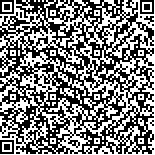| Quote
: |
李晓菲,王云辉,甄建华,于河,刘铁钢,郝钰,吴珺,邱泽计,梅沉成,谷晓红.银莱汤对食积复合FM1流感病毒小鼠全血微量元素的影响[J].湖南中医药大学学报英文版,2017,37(12):1303-1307.[Click to copy
] |
|
| |
|
|
| This paper
:Browser 3760times Download 2036times |
| 银莱汤对食积复合FM1流感病毒小鼠全血微量元素的影响 |
| 李晓菲,王云辉,甄建华,于河,刘铁钢,郝钰,吴珺,邱泽计,梅沉成,谷晓红 |
| (北京中医药大学中医学院, 北京 100029;山东省乐陵市人民医院中医科, 山东 乐陵 253600;北京中医药大学中医学院, 北京 100029;中日友好医院呼吸科, 北京 100029) |
| 摘要: |
| 目的 探讨银莱汤对食积复合FM1流感病毒感染小鼠全血微量元素含量的影响,为银莱汤药效机制的研究提供实验依据。方法 雄性昆明小鼠80只,随机分为正常组,食积组,感染组,食积感染组及银莱汤高、中、低剂量组,利巴韦林组。食积组、食积感染组及各治疗组均采用喂饲高蛋白、高热量饲料结合52%牛奶溶液灌胃的方法制作食积动物模型,感染则采用FM1流感病毒滴鼻处理,并予相应的治疗药物或生理盐水灌胃。取眼球血运用原子吸收光谱法(AAS)测定小鼠全血中微量元素(Cu、Zn、Ca、Mg、Fe)的含量。结果 与正常组相比,食积组、感染组、食积感染组小鼠的铜、锌、钙含量增高,镁元素含量明显降低(P<0.05),食积组小鼠的铁含量明显降低(P<0.05);与食积感染组相比,银莱汤各剂量组铜、锌、铁含量降低,但银莱汤低剂量组的钙、镁含量升高,而银莱汤高剂量组的钙、镁含量则降低,银莱汤中剂量组的铜、锌、钙、镁、铁含量与正常组相比差异无统计学意义(P>0.05)。与利巴韦林组相比,银莱汤各治疗组锌、钙、镁含量无差异,银莱汤中剂量组铜、铁含量明显升高(P<0.05)。结论 食积、感染及食积复合感染因素能够造成微量元素的紊乱,经银莱汤治疗后其微量元素水平得到一定程度的纠正。 |
| 关键词: 银莱汤 食积 FM1流感病毒 微量元素 |
| DOI:10.3969/j.issn.1674-070X.2017.12.002 |
| Received:April 06, 2017 |
| 基金项目:国家自然科学基金项目(81373769);高等学校博士学科点专项科研基金(20120013120006);北京市教委产学研项目(1000062520040)。 |
|
| Influences of Yinlai Decoction on Plasma Trace Elements of Mice with Dyspesia Combined with FM1 Influenza Virus Infection |
| LI Xiaofei,WANG Yunhui,ZHEN Jianhua,YU He,LIU Tiegang,HAO Yu,WU Jun,QIU Zeji,MEI Chencheng,GU Xiaohong |
| (College of Traditinal Chinese Medicine, Beijing University of Chinese Medicine, Beijing 100029, China;Department of Traditional Chinese Medicine, Leling City People's Hospital, Leling, Shandong 253600, China;College of Traditinal Chinese Medicine, Beijing University of Chinese Medicine, Beijing 100029, China;China-Japan Friendship Hospital of Respiratory Department, Beijing 100029, China) |
| Abstract: |
| Objective To explore the influence of Yinlai decoction (YD) on trace elements in blood of mice with dyspepsia combined with FM1 influenza virus infection, and identify the efficacy of YD and their potential mechanism. Methods 80 male mice were randomly divided into the normal group, dyspepsia group, virus-infected group, virus-infected and dyspepsia group, high, middle and low dosage of YD groups, ribavirin group. A diet-induced mice model with high fat and protein intake was used to develop models of dyspepsia animal for the dyspepsia group, virus-infected and dyspepsia group, and all the groups. The mice from virus-infected group were infected with FM1 influenza virus intranasally and received corresponding therapeutic drug or physiological saline by gavage. The level of trace elements(Cu, Zn, Ca, Mg, Fe)in blood were assessed by Atomic Absorption Spectrometry (AAS). Results Compared with the normal group, the Cu, Zn, Ca plasma levels of dyspepsia group, virus-infected group, and virus-infected and dyspepsia group increased, while the levels of Mg decreased significantly (P<0.05), and the plasma levels of Fe in dyspepsia group decreased significantly (P<0.05). Compared with the virus-infected and dyspepsia group, Cu, Zn, Fe plasma levels decreased in all the YD dosage groups, while the level of Ca, Mg increased in low dosage of YD group, but decreased in high dosage of YD group. The plasma levels of Cu, Zn, Ca, Mg, Fe in middle dose of YD groups were not statistically different, compared with the normal group (P>0.05). Analyzing the ribavirin treatment group, its Zn, Ca, Mg plasma levels were not statistically different, compared with the YD groups (P>0.05), however the plasma levels of Cu, Fe increased significantly (P<0.05) in middle dosage of YD. Conclusion The factors of dyspepsia, virus infection, and virus-infection with dyspepsia can cause disorder in trace elements, and Yinlai decoction can balance the plasma levels of these trace elements. |
| Key words: Yinlai decoction dyspepsia FM1 influenza virus trace elements |
|

二维码(扫一下试试看!) |
|
|
|
|


